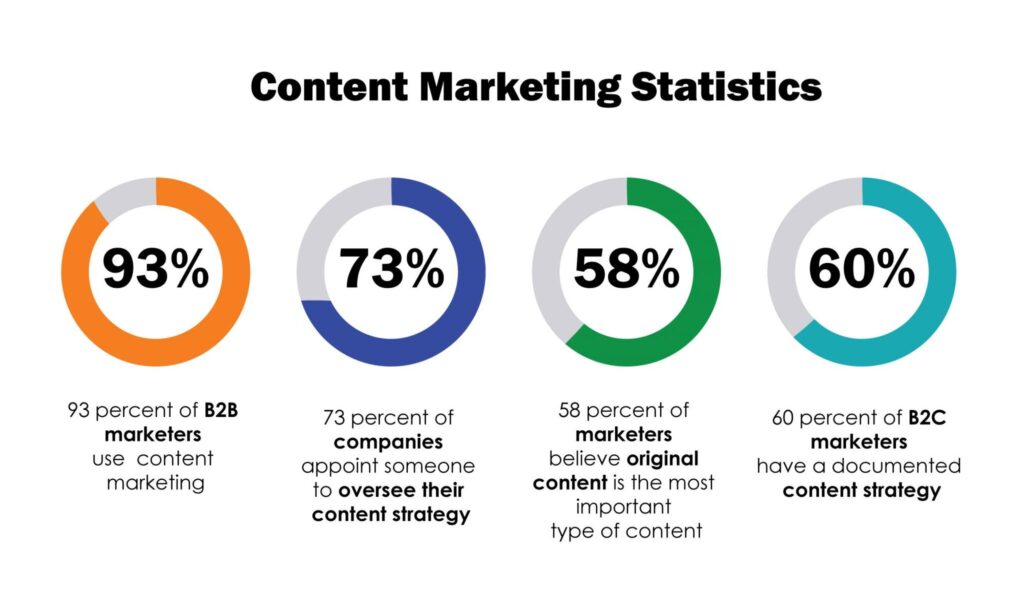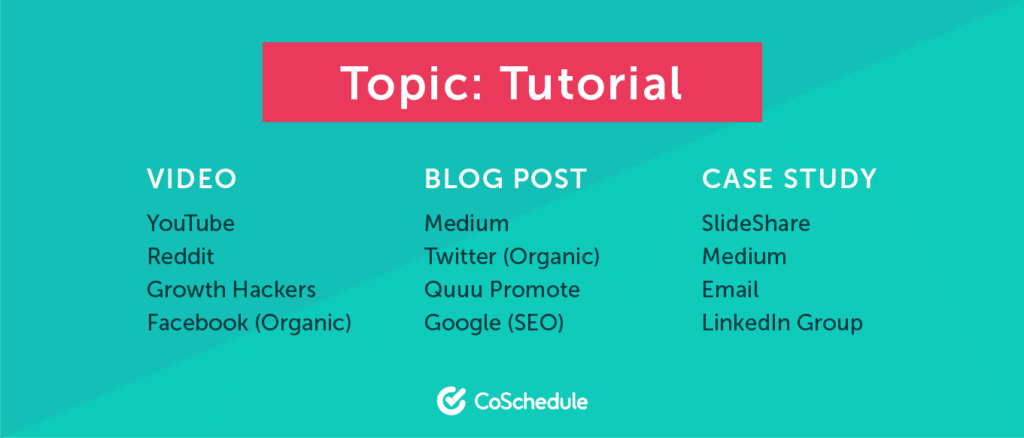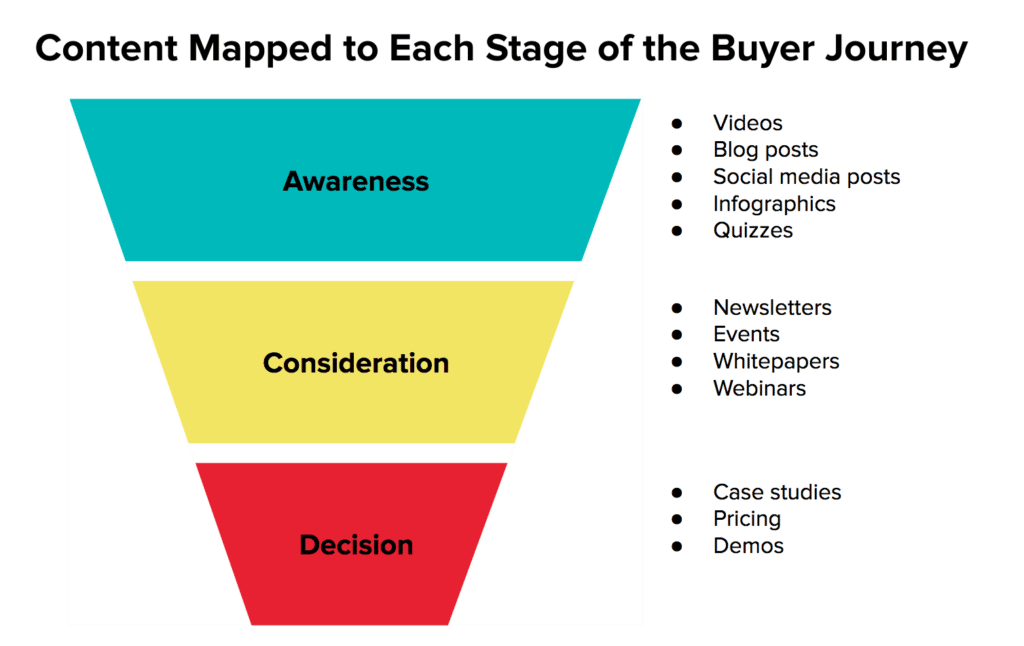Creating and distributing valuable content has to be an integral part of every single growth initiative and plan. We live in a digital world where it is easy to expand your reach, target specific personas, and understand which content topics and types perform best.
The hardest part about content is the actual creation itself. Putting in the time, effort, and investment needed to develop content that will resonate with your ideal customer is where I’ve seen a lot of companies give up.

More specifically, content is a long-term game, and for many businesses today, that mindset just doesn’t really exist. The expectation for virality and immediate gratification (i.e. leads and sales) is always top of mind for businesses pushing for growth.
I can’t argue with that. However, where many fall short is simply the fact that they miss the forest from the trees. They put a heavier emphasis on virality and immediate results as the main reason why content should be given any attention.
Why content matters
To put things into perspective, outside of work we all consume different types of content — from humor to sports to music, etc. As such, content comes in many different forms and there really isn’t a “magic formula” to something going viral. However, the more consistent you are with pushing out content that your target audience cares about, the more of a chance you’ll have of really seeing one or two become a huge hit that foster your business goals.
Here are supporting reasons why content should be held with a higher priority within your company, no matter the size:
- SMBs report spending an average of $10,000 on content marketing per year.
- For comparison, one in six enterprise-level organizations reports spending at least $10 million per year on content creation.
- 62% of marketers intend to increase their content marketing budgets within the next fiscal year.
- 87% of marketers who’ve used webinars found them effective.
- 67% of marketers report SEO as the most effective tactic they implemented to grow their content strategy.
- Content marketing costs 62% less than traditional marketing and generates three times as many leads.
With all of that in mind, let’s look at how you can build tons of value with your content marketing efforts.
Get into the practice of planning ahead
As the saying goes, “failing to plan is planning to fail.” When it comes to figuring out what you’re going to write about, when you want to publish, and how to distribute, you have to create a content calendar to help with the planning process. This will also allow you to hold yourself and your team accountable for ensuring that content becomes a consistent practice.
Above all else, make sure you lay out specific content goals and align them with your business objectives. Here are some key strategies to keep top of mind as you plan:
- Know your publishing cadence.
- Decide the channels and platforms you will leverage to distribute your content.
- Figure out how content will help you be a part of the larger conversation around the problems your target audience faces.
- Determine how your content will contribute to revenue generation and by how much.
- Look at how your content will help nurture your potential buyers, as well as current customers, throughout their entire journey.
- Make sure you have a way to track and measure the performance of your content assets and their marketing.
- Know what your ideal customers are searching for online. Then, determine the keywords and phrases you want to rank for to meet them when searches are implemented.
- Develop topic clusters to help your chances of ranking and meeting the searcher intent.
- Decide which types of content you will work on and test out (e.g. infographics, webinars, checklists, eBooks, tutorials, etc.)

I know, creating all of this content seems overwhelming. Don’t forget that hiring some freelance writers or graphic designers can be relatively inexpensive and will free up your valuable time. When I’m looking for a qualified freelancer, I like to use Fiverr. Fiverr has experts in all kinds of different industries, and they guarantee your satisfaction with the content you order. Check out the many different kinds of freelancers you can hire to help with your content marketing on their website.
Have a deep understanding of the buyer journey
Just as I mentioned above, as part of the planning process, you have to have a deep understanding of the buyer’s journey. This isn’t just about creating funnels and processes that don’t ever get implemented to maximize results. Rather, it’s about making sure that you don’t waste your time on creating content that isn’t going to contribute to the overall success of your efforts.

Knowing the type of content you’ll be developing is one thing, but actually understanding the “why” behind them is going to be more beneficial than anything. You need to know the motivation behind what will trigger your target audience to consume your content.
Additionally, you also need to nail down the following:
- Knowing the power messages that will drive action. For example, “exclusive access” or even “early access” are power messages that you can test.
- Position your product/service so that it’s easy to understand and therefore, will be interpreted as easy to use. This gets rid of friction points that your target audience might be concerned with when it comes to entering your content funnel.
- Test out your CTAs. I’m a fan of doing this because this is an important variable when it comes to alignment with the power messages that motivate people to take action.
A great place to test out power messages and CTAs is through your email marketing. This is an easy way to A/B test everything from subject lines to CTA buttons to see what really drives your subscribers to act. Once you know what kind of content your audience enjoys, you can then use that information in all parts of your marketing strategy.
There are several great platforms that can help you automate and test your email marketing. I like Ontraport because it has many capabilities and is also relatively inexpensive, which is ideal for smaller businesses. You can request a free demo of Ontraport here.
For larger businesses, I like to use Hubspot because it is fully scalable and has a few more features, such as social media scheduling and customer service functionalities. In addition, their email marketing is currently free, so it may be smart to take advantage of that offer — check it out here.
Have actionable tips and insights
Nothing is going to bore your target audience more than developing content that only talks about what you have to offer, rather than actually having valuable insights and actionable tips. This means that every piece of content you push out has to be thought out and connected to the problem you solve.
Here are some ideas to get you started:
- Create case studies and use cases.
- Include curated studies and reports.
- Push to tell stories with which your target personas can relate.
- Put a face to the content you’re producing. This makes it much more personable.
- Take popular pieces of content and splice them into smaller pieces that you can share out via social media.
Further, keep in mind that as you produce content and share it out, you have to also stay true to who you are. Authenticity is going to win more than trying to impress your target audience by being someone you’re not. It’ll be easy for them to see through that. More specifically, know that 86% of people say authenticity is important when deciding what brands they like and support.
Moving Forward
Stay consistent with your efforts, as this is a surefire way to drive the desired results you’re pushing for. Know that creating and sharing out your content assets is a team effort, not just for the marketing team. For instance, sales should be leveraging your content for social selling, outreach, prospecting, and closing deals.
Finally, make sure you test as much as possible so you understand which type of content (e.g. videos, text-based, graphics, etc.) drives the most engagement that then turns into real sales opportunities for your business. Being able to report back on these items will also help you figure out where to invest more of your time and efforts.
Disclosure: Please note that some of the links above are affiliate links. I only recommend products and services that I use and stand behind, and if you decide to try them, I will earn a commission at no cost to you. Doing so helps me run this blog and provide free content for you, my readers.






3 Responses